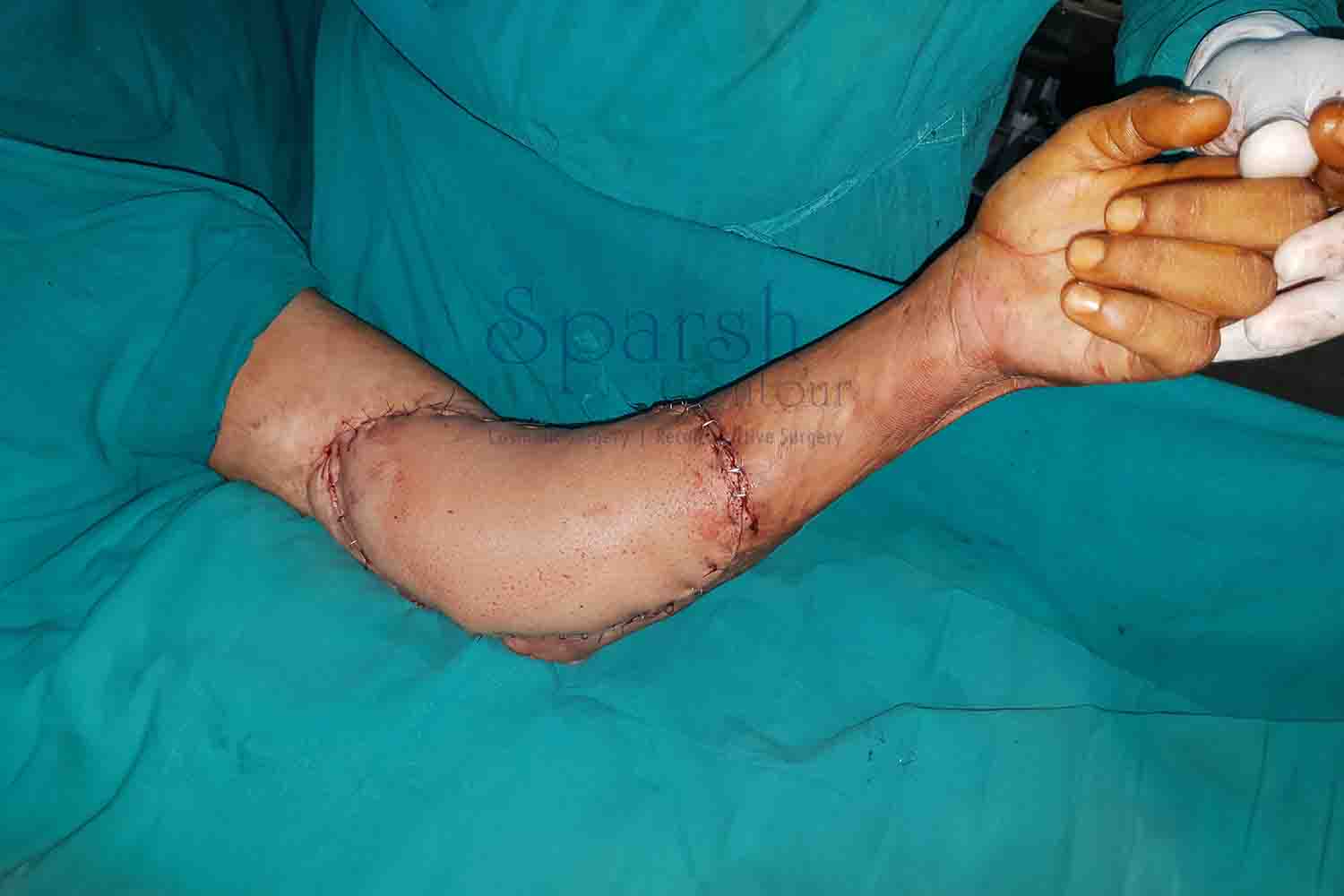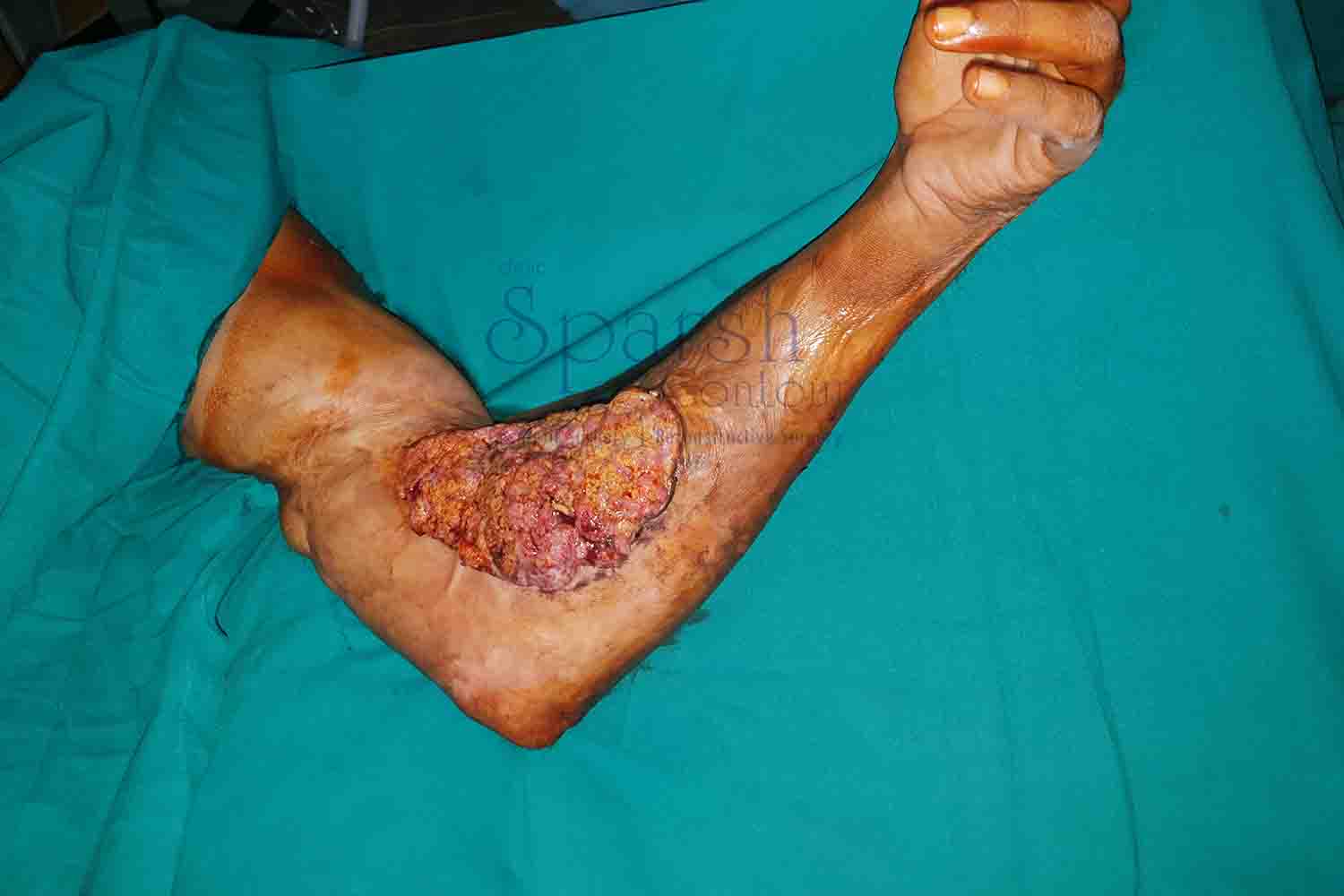Cancer Reconstruction
Extremity Reconstruction
Cancer extremity reconstruction is a specialized surgical procedure aimed at restoring the form, function, and appearance of limbs affected by cancer and its treatment. This complex procedure is often performed after the removal of tumors in the arms or legs, which may leave significant soft tissue, bone, or vascular defects.
When cancer impacts the extremities, treatment often involves surgeries such as tumor excision or limb-sparing procedures, which can lead to extensive tissue loss and functional impairment. Dr. Sushil Nahar combines technical expertise with a patient-centered approach to ensure optimal outcomes for individuals facing these challenges. His goal is to preserve the limb's functionality while achieving a natural appearance, enabling patients to regain mobility and confidence.
For cases where radiation therapy has caused additional tissue damage, Dr. Nahar employs specialized reconstructive methods to repair and restore the affected tissues effectively.
This procedure is critical not only for physical recovery but also for improving the psychological well-being of cancer survivors. By restoring limb function and aesthetics, cancer extremity reconstruction allows patients to return to daily activities, work, and social engagement with improved quality of life.
When cancer impacts the extremities, treatment often involves surgeries such as tumor excision or limb-sparing procedures, which can lead to extensive tissue loss and functional impairment. Dr. Sushil Nahar combines technical expertise with a patient-centered approach to ensure optimal outcomes for individuals facing these challenges. His goal is to preserve the limb's functionality while achieving a natural appearance, enabling patients to regain mobility and confidence.
For cases where radiation therapy has caused additional tissue damage, Dr. Nahar employs specialized reconstructive methods to repair and restore the affected tissues effectively.
This procedure is critical not only for physical recovery but also for improving the psychological well-being of cancer survivors. By restoring limb function and aesthetics, cancer extremity reconstruction allows patients to return to daily activities, work, and social engagement with improved quality of life.
 After
After  Before
Before Drag
Cancer Reconstruction
When Cancer Extremity Reconstruction is needed ?
- After surgical excision of cancerous tumors in the limbs, which may result in significant soft tissue, bone, or vascular damage.
- To restore the functionality and structure of the limb when amputation is avoided through advanced oncologic surgery.
- To enable normal movement, walking, or gripping by repairing muscles and joints affected by cancer surgery.
- For reconstruction of nerves and blood vessels compromised during tumor removal to maintain sensation, circulation, and limb vitality.
our expert answers
frequently asked questions
Can cancer extremity reconstruction restore limb function?
Yes, the goal is to restore as much limb function as possible, including movement, strength, and stability, depending on the extent of tissue loss.
Will the appearance of my limb be restored?
Yes, the procedure aims to restore the natural appearance of the limb as much as possible, including addressing scars or deformities caused by cancer surgery.
Can prosthetics be used in cancer extremity reconstruction?
Yes, prosthetic implants may be used when necessary to restore function, especially if bone loss is significant, or in cases where mobility is compromised.
Can cancer extremity reconstruction help prevent amputation?
Yes, for some patients, extremity reconstruction can prevent the need for amputation by restoring sufficient function and appearance to the limb.
Is cancer extremity reconstruction suitable for all patients?
While it is suitable for most patients who require limb reconstruction after cancer, the procedure’s success depends on the patient’s overall health, cancer stage, and specific needs.
What kind of follow-up care is needed after cancer extremity reconstruction?
Follow-up care includes regular check-ups to monitor healing, manage any complications, and ensure proper rehabilitation for optimal recovery and function.
APPOINTMENT
